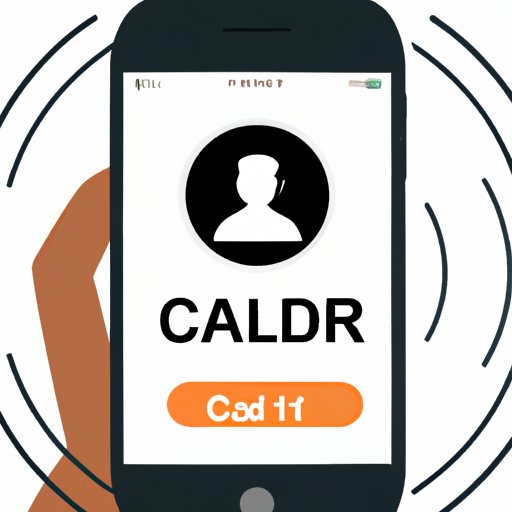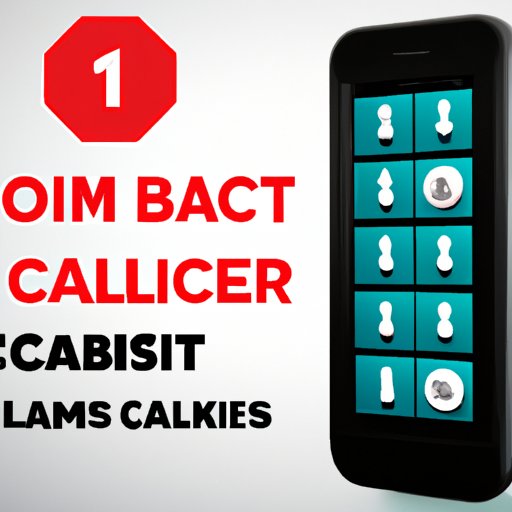Introduction
Scam likely calls are becoming increasingly common and can be quite annoying. They come in all shapes and sizes, ranging from automated telemarketing messages to outright scams. Fortunately, there are a few steps you can take to block these calls and protect yourself from fraud. In this article, we’ll explore how to block scam likely calls, including utilizing call blocking apps, registering with the Do Not Call list, activating caller ID, looking up unfamiliar numbers online, reporting scam calls to the FCC, and updating your phone’s operating system.
Utilizing Call Blocking Apps
One of the most effective ways to block scam likely calls is to use a call blocking app. These apps allow you to easily block unwanted calls by creating a blacklist of numbers that you don’t want to receive calls from. There are several different types of call blocking apps available, including those that are pre-installed on your phone, those that you can download from the app store, and those that are provided by your phone carrier. Each type of call blocking app has its own unique features and benefits, so it’s important to research which one is best for you.
Once you’ve chosen a call blocking app, downloading and setting it up is relatively straightforward. Most apps will walk you through the process step-by-step, so you don’t have to worry about any technical knowledge. Additionally, many of these apps offer additional features such as the ability to block specific area codes or even block entire countries. With the right call blocking app, you can effectively keep unwanted calls from reaching your phone.
Registering with Do Not Call List
Another way to block scam likely calls is to register your phone number with the National Do Not Call Registry. This registry is maintained by the Federal Trade Commission (FTC) and allows consumers to opt-out of receiving most types of telemarketing calls. Once you’ve registered your phone number, telemarketers are prohibited from calling you unless they have your express written permission. Even if you do give them permission, they are still required to honor any requests to stop calling you.
Registering with the Do Not Call list is free and easy. All you need to do is visit their website and follow the instructions. You’ll need to provide some basic information such as your name, address, and phone number. Once you’ve completed the registration process, your phone number should be added to the list within a few days.

Activating Caller ID on Your Phone
Activating caller ID on your phone is another great way to block scam likely calls. When you enable caller ID, incoming calls will display the name, phone number, and location of the person calling you. This makes it easier to identify suspicious numbers and block them before they can reach you. Additionally, many phones now offer the option to block calls from unknown numbers, allowing you to automatically reject any calls from unidentified numbers.
Activating caller ID is usually a simple process. Most phones have a built-in feature that allows you to turn on caller ID with just a few taps. If your phone doesn’t have this feature, you may need to go into the settings menu and manually enable it. Additionally, some carriers may require you to pay an additional fee in order to use caller ID, so be sure to check with your provider before proceeding.

Looking up Unfamiliar Numbers Online
If you receive a call from an unfamiliar number, you can look it up online to see if it’s associated with any known scams. Several websites allow you to search for phone numbers and read reviews from other users who have received calls from the same number. This can help you determine whether a particular number is associated with a scam or not.
When looking up a phone number, be sure to check multiple sources. Some websites may contain inaccurate or outdated information, so it’s always best to cross-check your results. Additionally, be aware that some scammers may use fake numbers, so even if a number isn’t listed as a scam, it’s still wise to exercise caution when dealing with unfamiliar numbers.

Reporting Scam Calls to the FCC
If you receive a call that you believe is a scam, you should report it to the Federal Communications Commission (FCC). The FCC collects complaints about illegal robocalls and works with law enforcement to investigate and prosecute those responsible. By filing a complaint, you can help the FCC better understand the scope of the problem and take action against those responsible.
Reporting a scam call to the FCC is easy. All you need to do is visit their website and fill out the online form. Be sure to include as much detail as possible, such as the date and time of the call, the phone number that was called, and any other relevant information. Once you’ve submitted the form, the FCC will review your complaint and take appropriate action.
Updating Your Phone’s Operating System
Finally, it’s important to periodically update your phone’s operating system. Many of the latest operating systems include features specifically designed to combat robocalls and other forms of spam. By staying up to date, you can ensure that your phone is equipped with the latest tools to protect you from scam likely calls.
Updating your phone’s operating system is usually a quick and easy process. Most phones have a built-in feature that allows you to check for updates and install them with just a few taps. Additionally, some phones may also prompt you to install updates when they become available, so be sure to keep an eye out for any notifications.
Conclusion
In conclusion, there are several steps you can take to block scam likely calls and protect yourself from fraud. Utilizing call blocking apps, registering with the Do Not Call list, activating caller ID, looking up unfamiliar numbers online, reporting scam calls to the FCC, and updating your phone’s operating system are all effective measures you can take to keep unwanted calls from reaching your phone. However, it’s important to remember to always use caution when dealing with unfamiliar numbers, as scammers are constantly finding new ways to target unsuspecting victims.
(Note: Is this article not meeting your expectations? Do you have knowledge or insights to share? Unlock new opportunities and expand your reach by joining our authors team. Click Registration to join us and share your expertise with our readers.)
